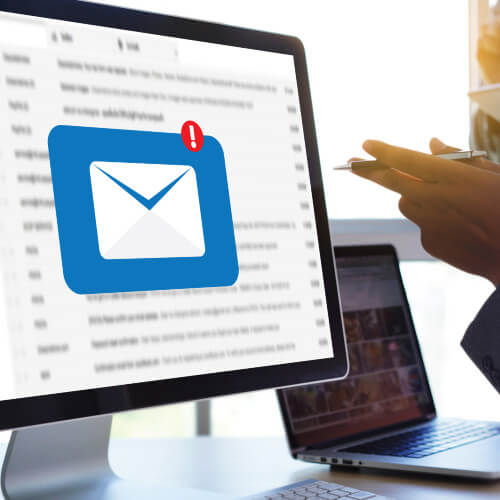
How Important is Building a Mailing List?
Emailing your customers and prospects can be a great means of communication, but it is sometimes regarded as spam. In this article, we explore the benefits of building a mailing list and how to use this marketing opportunity wisely to maximise engagement and avoid unsubscribes…
Is Email Marketing Effective?
Email marketing has been around for years, yet, when used well, it remains a highly effective marketing tool. For one thing, it can be personalised, and offers control over who you reach and with what message, in a way that isn’t possible with social channels.
According to Hubspot research published earlier this year, 77% of marketers reported an increase in email engagement in 2021 and 41.5% of brands said email marketing was critical to business success. 37% planned to increase their email marketing budget, which would be out of the question if it wasn’t delivering returns.
Having said this, when we mention email marketing to clients, there is often hesitation. There is an association with spam. They don’t want to be viewed as annoying by their customers and prospects. So, how can you use email marketing effectively?
How to Build Your Mailing List
The first step is to proactively build your mailing list. This has to be made up of customers and prospects with a genuine interest in your offer and your company values. They are more likely to be receptive to your communication; keen to know about your latest news, advice and offers.
You can encourage people to join your mailing list with calls to action on your website pages, sophisticated landing pages, and in social posts. It’s great to add an incentive that adds value, such as:
- A discount code for their next order
- Access to an informative report
- Entry into a monthly competition
- Free delivery
- Top tips, templates and more!
To be GDPR compliant, the contacts on your mailing list should opt in and consent to receiving emails from your company. This is normally managed by ticking a box on your website. The data that they share with you must be protected, usually on a secure database or Customer Relationship Management (CRM) system. Another requirement is that you offer a simple way for recipients to unsubscribe from your email marketing communications in future.
Note that changes to the current data protection legislation, often referred to as GDPR are expected in 2023.
Email marketing is highly measurable, you’ll be able to keep an eye on open and CTR (click-through rates) and see who is subscribing and unsubscribing. Over time you’ll build up a clear picture of what works.
Is it worth buying a Mailing List?
The majority of times, this seemingly quick fix is a strategy to be avoided! Firstly, you don’t know how the data has been collected and whether it adheres to the principles of GDPR. And secondly, the contacts on that list have no connection to your brand or products, so your messages will be irrelevant to them. As a result, any email marketing to a bought list could be regarded as spam resulting in a block on your ESP (Email Service Provider) and creating a negative association with your brand.
Hopefully this is enough to assure you that buying a mailing list can be counterproductive unless you can guarantee the source and the relevance. It is far better to have 10 genuine contacts that want to engage with you and are likely to buy from you, than 10,000 with no connection to you. Think quality not quality.
Stay Connected with your Mailing List
As you build your mailing list, you gain a useful means of communication, so you want to make it work. The aim should be to share information, ideas and offers that interest and excite the reader. Consider it like a conversation with a friend – you know what they like and you forward things that make them smile.
Now, you may not know all of your contacts so well, but you can use insight and data to segment them. Segmentation aims to deliver the most relevant content to each group, so consider what they might want to receive and what would work for your business. Here are three points to get you started:
- Are they prospects, new clients or loyal customers?
- Does the nature of their enquiry or purchase history tell you something about their purchasing preferences?
- Would their geographical location affect the products, services or offers they could access?
Now you can tailor a message that is more likely to hit the mark for each group. Put yourself in their shoes, to try to understand what they are most likely to want to know – and when. If the content is relevant and valuable, you stand the best chance of retaining your mailing list and avoiding unsubscribes.
In some cases, the same message could be tweaked to make it relevant to each group, but also consider how you can personalise the email content. As an example, exclusive invitations to shopping events or product launches can be sent to local and/or loyal customers, whilst a limited-time discount code or styling/serving/user tips may encourage a prospect over the line.
Email marketing is one of the direct marketing services offered by my team at Alison Page Marketing. Get in touch and let us help you to build, segment and plan content for your mailing list.

